"The Palace" of Balchik- one of Bulgaria's seven wonders
Boyana Draganova, visitbulgaria.net, 19.06.2008
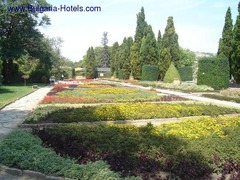 A dazzling white and beautiful memory materializes from the past as one stands on the sea shore of Balchik. Surrounded by a unique botanic garden, the castle’s natural decorations come up second in significance after the ones in Monaco. The whole story behind “The Palace” and the garden immediately rouse the imagination for new wonderful legends and myths of this magical place.
A dazzling white and beautiful memory materializes from the past as one stands on the sea shore of Balchik. Surrounded by a unique botanic garden, the castle’s natural decorations come up second in significance after the ones in Monaco. The whole story behind “The Palace” and the garden immediately rouse the imagination for new wonderful legends and myths of this magical place.
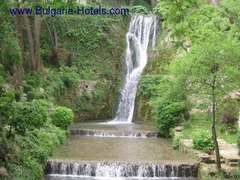 “The Palace” was built by Queen Mary, the ruler of Romania, in 1937. In fact, the process of its construction took more than 11 years. Ever since her first arrival in Balchik, back in 1924, Queen Mary fell spellbound by the untouched beauty of the place. In those days the town and the whole of North Dobrudja were under the reign of our neighbor Romania. Queen Mary was Scottish by origin and her marriage with King Ferdinand of Romania was only a political alliance. Her confined life in the Romanian court, along with the incessant unfaithfulness of her husband, grew unbearable for the Queen, so she decided to convert the beautiful bay of Balchik into her refuge. On her orders, all the lands in the region were bought, including the desolate water-mills, and the construction of the residence began.
“The Palace” was built by Queen Mary, the ruler of Romania, in 1937. In fact, the process of its construction took more than 11 years. Ever since her first arrival in Balchik, back in 1924, Queen Mary fell spellbound by the untouched beauty of the place. In those days the town and the whole of North Dobrudja were under the reign of our neighbor Romania. Queen Mary was Scottish by origin and her marriage with King Ferdinand of Romania was only a political alliance. Her confined life in the Romanian court, along with the incessant unfaithfulness of her husband, grew unbearable for the Queen, so she decided to convert the beautiful bay of Balchik into her refuge. On her orders, all the lands in the region were bought, including the desolate water-mills, and the construction of the residence began.
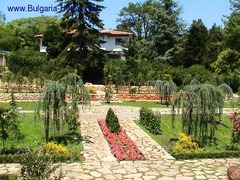 The craftsmanship of the elegant structures was undertaken by the Italian architects Augustino and Amerigo, while the park complex was left in the professional hands of the famous at the time Swiss florist Jul Joni. After a few years, right next to the very sea shore appeared “The Palace”. Apart from the main castle, numerous cozy individual villas were built in the rapidly developing park complex, so that the guests of the residence could rest undisturbed in their chambers. According to some scientists, the parks and architecture of “The Palace” hold a strong religious connotation, and the main idea of the Queen was to create a replica of the Holy Lands. The Queen herself spent part of her life in Egypt, where she adopted the Bahá’í Faith. The religion preaches equality between beliefs, sexes and races, which is why the complex represents numerous cultural and spiritual influences. Here the Christian and Muslim edifices exist in unison, and the colons, arches, fountains and bridges are all decorated in either Oriental, Thracian, Roman or Christian symbols. It is as though the whole world is brought together in this small piece of land next to the sea.
The craftsmanship of the elegant structures was undertaken by the Italian architects Augustino and Amerigo, while the park complex was left in the professional hands of the famous at the time Swiss florist Jul Joni. After a few years, right next to the very sea shore appeared “The Palace”. Apart from the main castle, numerous cozy individual villas were built in the rapidly developing park complex, so that the guests of the residence could rest undisturbed in their chambers. According to some scientists, the parks and architecture of “The Palace” hold a strong religious connotation, and the main idea of the Queen was to create a replica of the Holy Lands. The Queen herself spent part of her life in Egypt, where she adopted the Bahá’í Faith. The religion preaches equality between beliefs, sexes and races, which is why the complex represents numerous cultural and spiritual influences. Here the Christian and Muslim edifices exist in unison, and the colons, arches, fountains and bridges are all decorated in either Oriental, Thracian, Roman or Christian symbols. It is as though the whole world is brought together in this small piece of land next to the sea.
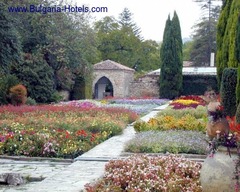 The cultural and historical significance of the place is without a doubt tremendous. Here in perfect harmony exist Moresque water grounds, authentic large Thracian jars and Roman tombstones, among the lush verdure of hundreds of rare plant species. This marvelous scenery of nature is being kept alive by dozens of little streams, waterfalls and cascades. On the other hand, the Roman bath, the rosary, the chapel or the vast colonnade overlooking the sea all offer numerous peaceful spots, which seem to bring back the romance and nostalgia of the old times.
The cultural and historical significance of the place is without a doubt tremendous. Here in perfect harmony exist Moresque water grounds, authentic large Thracian jars and Roman tombstones, among the lush verdure of hundreds of rare plant species. This marvelous scenery of nature is being kept alive by dozens of little streams, waterfalls and cascades. On the other hand, the Roman bath, the rosary, the chapel or the vast colonnade overlooking the sea all offer numerous peaceful spots, which seem to bring back the romance and nostalgia of the old times.
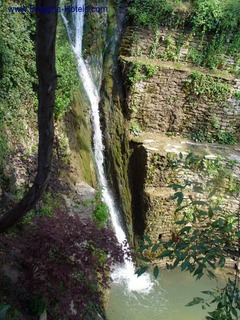 Every small plant, alcove, bridge or arch suggests that this place was created from artists for the pleasure of artists. Here Queen Mary hosted splendid receptions, on which often attended the cream of the European society. Regular guests were mainly poets, artists and musicians, while the Queen herself wrote poetry under the pseudonym Carmen Silva. However, the truth behind many of the events taking place at “The Palace” will forever remain hidden in the leaves of the park trees, like the supposition that the Queen’s favorite residing place was the rosary where she treated her guests with opium and then, hidden behind the stained glass, she eavesdropped on their conversations under the influence of the narcotic. Back in those days it was an unwritten rule that no one admitted what one truly thought.
Every small plant, alcove, bridge or arch suggests that this place was created from artists for the pleasure of artists. Here Queen Mary hosted splendid receptions, on which often attended the cream of the European society. Regular guests were mainly poets, artists and musicians, while the Queen herself wrote poetry under the pseudonym Carmen Silva. However, the truth behind many of the events taking place at “The Palace” will forever remain hidden in the leaves of the park trees, like the supposition that the Queen’s favorite residing place was the rosary where she treated her guests with opium and then, hidden behind the stained glass, she eavesdropped on their conversations under the influence of the narcotic. Back in those days it was an unwritten rule that no one admitted what one truly thought.
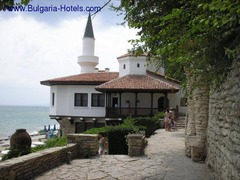 One last legend ends the life both of the Romanian Queen and of the bohemian pastimes in “The Palace”. It tells the tragic story of how one night the sons of the Queen, Mihay and Nicholay, got into a fight for a young courtesan. During this passionate quarrel they drew out their guns and when their mother tried to separate them, Mihay unintentionally released the deadly shot. In 1941, when Dobrudja was again under the reign of Bulgaria, the young princes returned to Balchik with a fleet of ships and under cannon salutes took the remains of their beloved mother back to Romania. But the spirit of Queen Mary still lingers in the complex, guarding it and reminding each visitor of the former glory of her only refuge, from which she used to gaze peacefully into the sea.
One last legend ends the life both of the Romanian Queen and of the bohemian pastimes in “The Palace”. It tells the tragic story of how one night the sons of the Queen, Mihay and Nicholay, got into a fight for a young courtesan. During this passionate quarrel they drew out their guns and when their mother tried to separate them, Mihay unintentionally released the deadly shot. In 1941, when Dobrudja was again under the reign of Bulgaria, the young princes returned to Balchik with a fleet of ships and under cannon salutes took the remains of their beloved mother back to Romania. But the spirit of Queen Mary still lingers in the complex, guarding it and reminding each visitor of the former glory of her only refuge, from which she used to gaze peacefully into the sea.
 Member of:
Member of:


















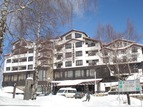
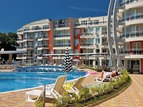



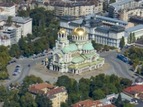



 Touroperator
Touroperator
